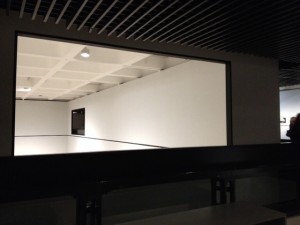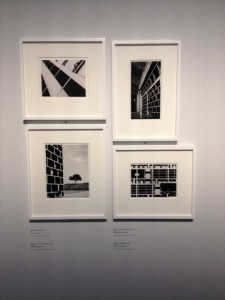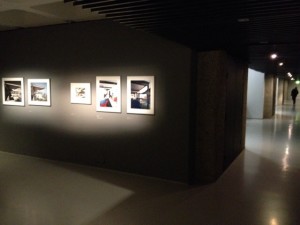Constructing Worlds – The Barbican, London

The central relationship explored in this exhibition is that between architecture and photography: how photographers have responded to the built environment around them, its static yet ever-changing nature, its central place in our lives; and how architecture, often through architects, has made use of photography. In order to shed light on this symbiotic give and take, the Barbican has brought together works by 18 different artists (or groups of artists as in the case of Bernd and Hilla Becher, for example), from different decades and backgrounds, and working in different contexts, from 1930s New York to the Three Gorges Dam in China.
There is no doubt that, taking each photographer’s work as an exhibition within itself, the show is fascinating. I have always loved photography for its sense of frozen time, of a moment that I am privy to in viewing the photograph but could never otherwise experience, and throughout the course of the exhibition I was fascinated by Walker Evans’ American tenant farmers, Lucien Hervé’s Chandigarh, Hiroshi Sugimoto’s dreamy silver gelatine prints, and Guy Tillim’s post-colonial Africa, among others. In fact, I spent an inordinate length of time taking in the details and the atmosphere of the different photographers’ work. I enjoyed the contrast of Southern California modernism with sites of modern conflict or the Torre David in Venezuela, and of those photographers interested most in subject versus those most interested in unusual or accomplished techniques.

Where I felt the exhibition to be a little lacking, on the other hand, is in drawing these disparate photographers together into a cohesive overall concept. Surely there were innumerable photographers to choose from who have captured different cities in different ways, so why these ones? What message was I meant to take from the curators’ decisions of inclusion and exclusion? Or was I meant to enjoy each separately, as I did, like a mezze platter of urbanism and photographic vision? As an aside, these doubts still exist even after attending a guided tour of the exhibit: the fact that the speaker seemed to be writing notes as we went through may go some way towards explaining why his interesting insights didn’t lead me to any firmer overall conclusions.
Yet overall this is an exhibition which I really enjoyed. I find it equally frustrating to be in an exhibition where the curators are overly prescriptive in their intended message, so maybe I should see the challenge of comparing, contrasting, and drawing my own conclusions as a positive one. I have taken away some names (Hervé and Tillim being first on the list) who I will look for in future, and have learned a lot about some of the times and places depicted as well as the photographers by whom they were depicted. And lastly, I learned that the Barbican’s modernist architecture can really come to life under the right circumstances, namely exhibition design by Office KGDVS. What a wonderful space in which to hang all those lines and forms, and just a pity that there was very little London architecture on display otherwise. Perhaps the curators had their reasons.

